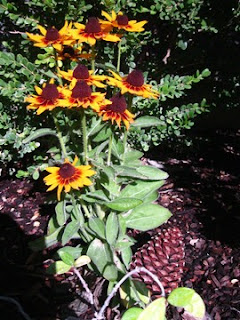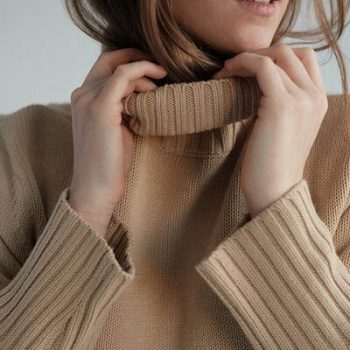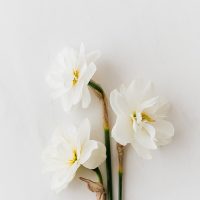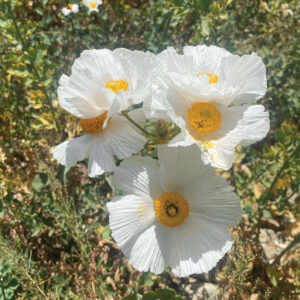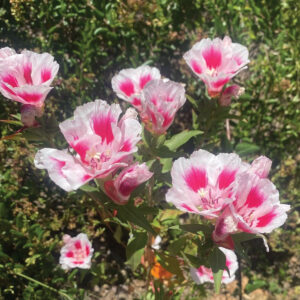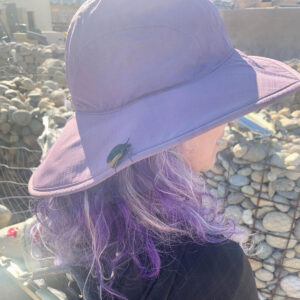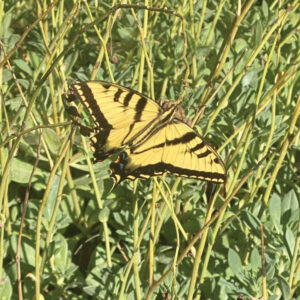Rudbeckia is more commonly known as Black-eyed Susan and it makes a beautiful, brightly colorful addition to a planter bed or container design. They are perennial flowers, (although a few varieties are annual… read your labels) which will give you many years of beauty and joy if you spend a little time caring for them each year.
Rudbeckias come in a variety of sizes and petal shapes, they are a beautifully sunny yellow daisy type flower and they have black, purple and even a kind of green/white-centered variety called ‘Irish Eyes’. They are low maintenance (easy care), attract butterflies, great for cut flowers, fairly drought tolerant, and they can take the heat! Summer blooming, they are great in masses or clumps (you know I love 3’s and that makes a nice clump), can be used in a mixed border, a meadow, or use one of the dwarf varieties as a lovely filler in a container design.
There are tons of varieties, so you can find one to fit pretty much any size that you want. Plant a two-foot variety, or plant a six-footer in the right place and it will pack a punch of color like none other. Please read the plant tags though, most of the varieties should be used in the middle or back of the border, and placing one of those six foot varieties in the front of the border because “it looks so cute in the six pack” would toss you into the gardening hall of shame!
Design tips:
Rudbeckia is not just for a hot color bed; use them as an accent for a lavender or blue bed and watch that bed POP! If you want to pair it with like type flowers, Scabiosa or Echinacea would be a nice foil for it, and if you want to go for more texture why not try it paired with Salvia ‘Caradonna’ or try a short variety at the feet of Salvia leucantha? Oh and what about mixed with Penstemon ‘Margarita BOP’… I’d better stop now.
Now for care tips:
These beautiful babies need full sun, but will take some light shade (especially in our hot Santa Clarita Valley) they need well-drained soil, so make sure to add compost to the native soil (down to about 15” or so) when you plant your Black-eyed Susan. Begin planting them in the spring and continue on right into the summer, remember to dig the hole twice the diameter of the pot the plant is coming from and the same depth, gently remove your plant from it’s container, back fill with a mixture of native soil and your compost, tamp the soil gently and water thoroughly. I like to add mulch 2-4” worth especially if I’m planting in the heat.
There are only a few chores you’ll need to upkeep your Rudbeckia – deadheading of course, and if you have frost in your area, cut back the stems to about and inch or two after the frost (or in SCV when it gets cold in December or January), but you could let the leaves remain if you like the texture and it will protect the roots from cold. You should divide your plants every three to five years (you can tell when they need it by the health of the plant) either in early spring before new growth begins or in the fall after they have finished blooming. Just dig up the clumps, divide and replant and if you have a lot share them with your family and friends.
Rudbeckia doesn’t need a lot of fertilizer, as a matter of fact too much can lead to them seeding out and some people find them a little invasive. Add compost and mulch both spring and fall and they should be fine. Now, isn’t that pretty easy? I think I need to go shopping for some more Black eyed Susans, or maybe I’ll just wait till Fall and divide!
If you would like help beautifying your life, think about creating a garden with me. You can call me at 661-917-3521, contact me via email at julie@thegrassisalwaysgreener.net or visit my website.



